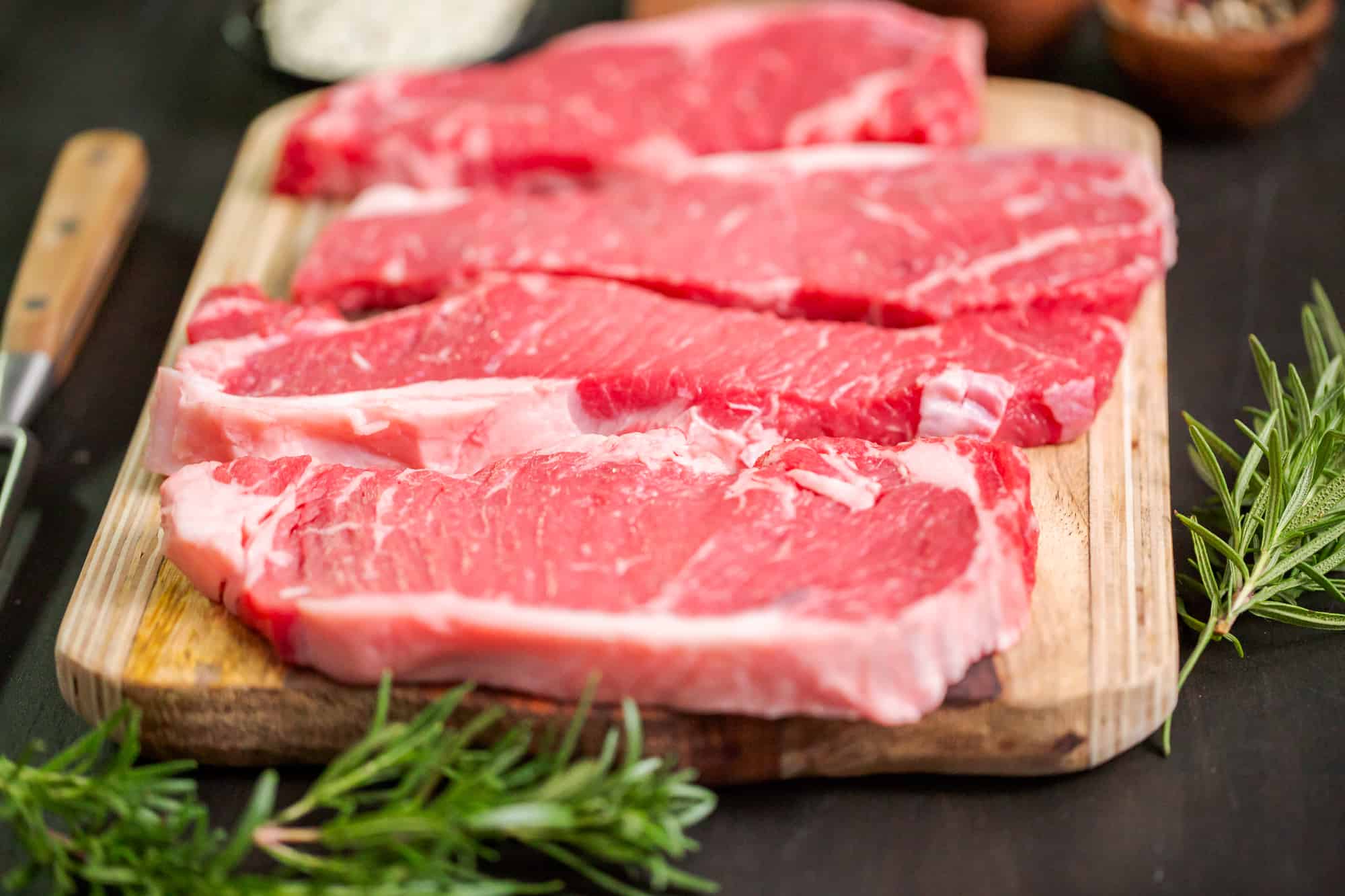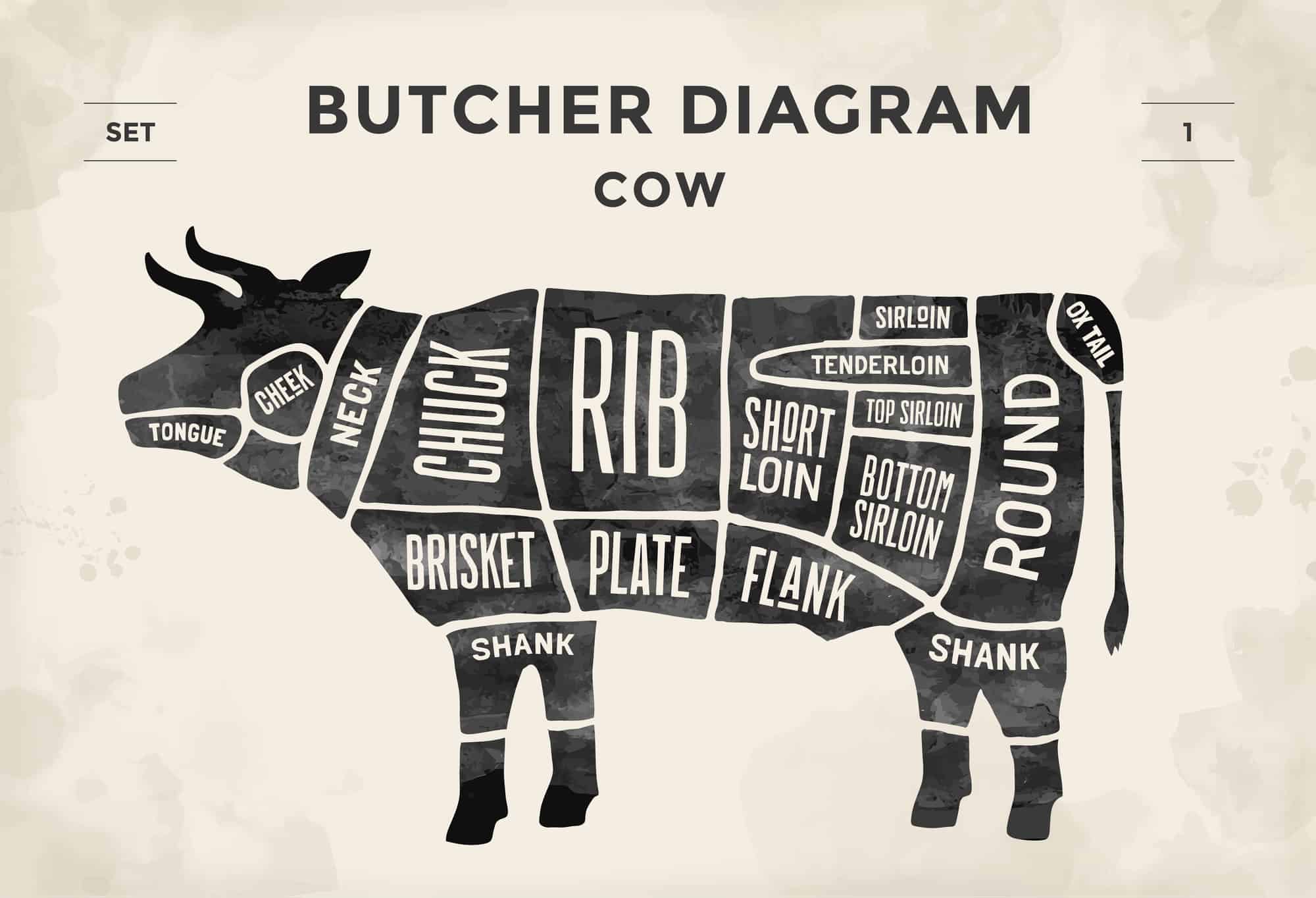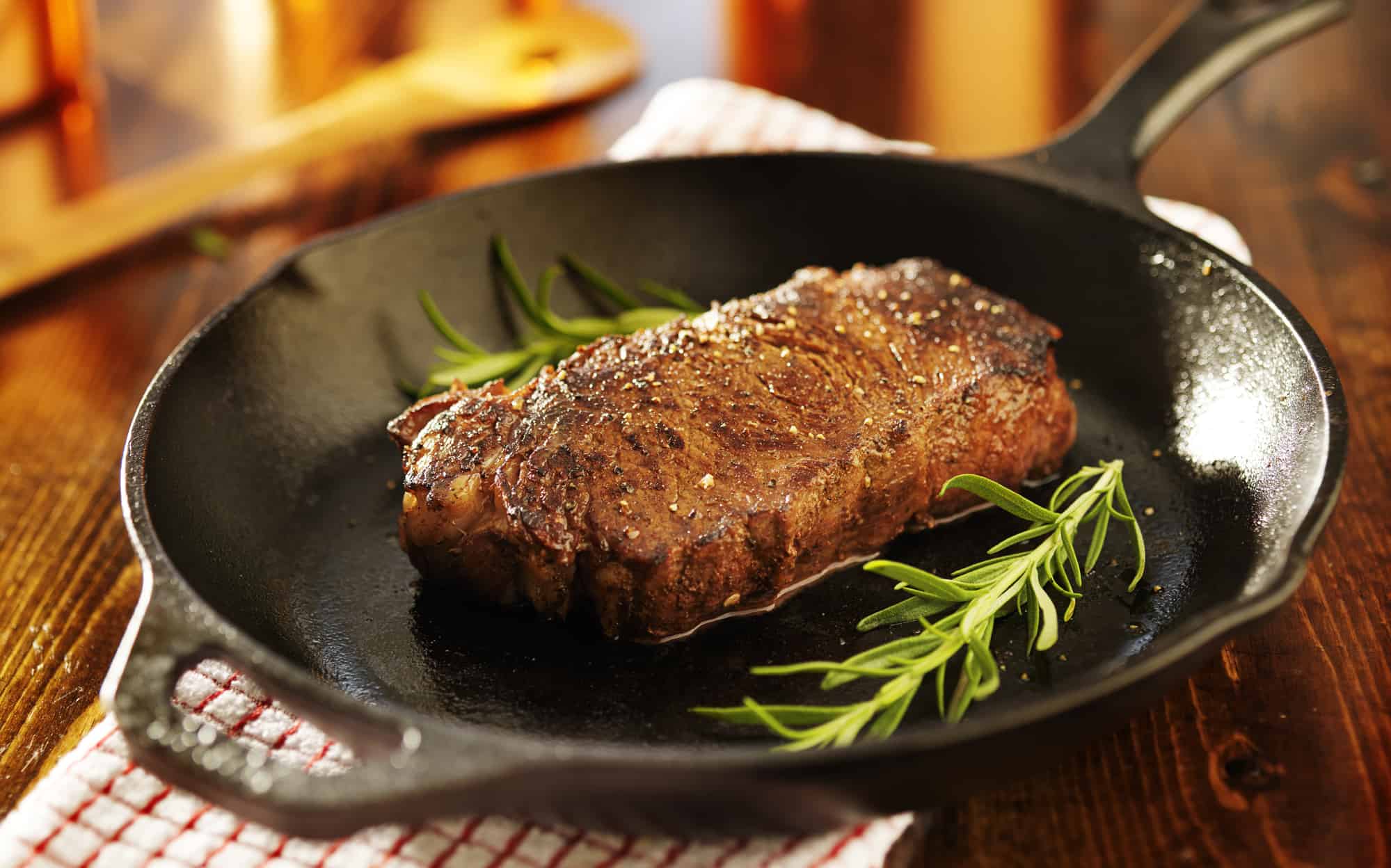When it comes to steak, the New York strip and filet mignon are two of the most popular cuts available. They are both tender, juicy, and full of flavor, however, they do have their differences. In this article, we'll outline the main differences, and similarities, and discuss which is a better cut of meat for your next steak dinner!

Jump to:
- What is a New York Strip Steak?
- What is a Filet Mignon?
- What area of the cow do New York Strip Steaks and Filet Mignon come from?
- The Main Differences Between New York Strip Steak and Filet Mignon
- Cooking Tips for New York Strip Steak and Filet Mignon
- Other Popular Steaks
- Conclusion: Which cut of beef is better?
- Best Side Dishes For Steak
What is a New York Strip Steak?

A New York strip steak is a cut of beef taken from the short loin of the cow. It is a specific type of sirloin, cut from the top sirloin and is most often boneless.
This cut of beef is fairly lean and tender though it does contain moderate amounts of marbling (or fat) throughout. This marbling provides extra flavor and juices. Despite being a fairly tender cut, you might find that the New York strip steak can have a slight chew to it.
This strip steak can also be labeled and marketed as Kansas City strip steak, strip loin steak, top loin steak, sirloin steak, or a shell steak.
A New York strip steak is an extremely popular cut of beef among steak lovers and is commonly seen in your favorite Steakhouse.
What is a Filet Mignon?

Like the strip steak, a filet mignon steak is a cut of beef that is also taken from the short loin or smaller end of the tenderloin of the cow. This specific muscle does very little work, making it one of the most tender cuts available. In addition, because this cut makes up only about 2% of the cow, it is a much more rare and therefore one of the most expensive cuts of meat.
The filet mignon may also be referred to as the filet, tenderloin steak, chateaubriand, or tournedo based on the type of cut.
This lean cut of meat lacks the fat content that you would find in other beef cuts - like the strip steak - and has a delicate texture and mild, buttery flavor. It is also considered a luxury cut of beef that you will often find in high-end restaurants.
What area of the cow do New York Strip Steaks and Filet Mignon come from?

Both the New York strip steak and filet mignon come from the area of the cow located right behind the rib cage, between the rib and the sirloin. This area is called the short loin area of the cow.
The New York steak comes specifically from the longissimus dorsi muscles, whereas the filet comes from the psoas major muscle.
The Main Differences Between New York Strip Steak and Filet Mignon

Fat Content
When it comes to the nutritional value between the two cuts of beef, they are very similar in both calories and protein. The biggest difference comes from the fat content. Because the strip steak has more marbling throughout, thus more fat, the fat content is just slightly higher than in the leaner filet cut.
Flavor
The flavor profile between a strip steak and filet mignon boasts a much larger difference than the nutritional value. The filet mignon is known for its mild and buttery texture and flavor. The New York strip steak, on the other hand, has a stronger, more beefy flavor.
Texture
As mentioned above, the texture of filet mignon is extremely tender which is one of the reasons it's such a high-quality cut of beef that is very popular in more expensive restaurants.
The strip steak, though still tender, has a more traditional firmer texture than the filet which makes it a bit chewier.
Price Differences
Another one of the largest differences between these two cuts of meat that is hard to ignore - the price!
Filet mignon is generally far more expensive than strip steak. As previously mentioned, this is due to the tenderness, mild flavor, and the fact that it is a rare cut of meat since it makes up such a small percentage of the cow.
The smaller and more expensive filet is often served in high-end restaurants while the New York strip steak is a steakhouse classic!
Cooking Tips for New York Strip Steak and Filet Mignon

The strip steak is typically a much more forgiving cut of meat to prepare than a filet due to the marbling throughout it. The extra fat helps to prevent the steak from drying out while also adding additional flavor.
The ny strip steak can be cooked in a variety of ways including grilling, smoking, broiling, or even pan-frying. We love using our blackstone or cast-iron pan to get a good sear.
Filet mignon is more delicate due to the leanness and lack of fat content - however when prepared correctly is a delicious and incredibly tender piece of meat! It is best cooked over high heat using methods such as roasting or grilling because of how quickly it cooks.
Here are a couple of tips to ensure your steak is perfect no matter which cut you choose:
- Don't go crazy with the seasonings! With high-quality cuts of meat, you really don't need much as far as seasonings and marinades go. Salt and black pepper - and maybe some garlic powder - is a classic steak combo that will offer the best results. When prepared correctly, your steak will be tender and flavorful without the need for all of the extras.
- Use a meat thermometer. I really can't stress this enough and recommend using a meat thermometer no matter what kind of meat you're grilling, smoking, etc. This will help to ensure your expensive cut of meat isn't overcooking (thus drying out) by tracking your desired internal temperature. Check out this post on the Best Traeger Accessories for my favorite meat thermometer along with more grilling must-haves!
- Allow your steak time to rest. It's important to let your steak rest after cooking to allow the juices time to redistribute. This makes for a deliciously tender and juicy steak! You should also keep in mind that the steak should be removed from the heat before the final desired temperature is reached as the steak will continue cooking during its rest.
Other Popular Steaks

Porterhouse Steak
The porterhouse is a t-bone steak made up of the filet mignon on one side of the t-shaped bone and the new york strip steak cut on the other side. Because it contains both of these steak favorites it's considered the ruler or king of the steakhouse restaurant menu!
Ribeye Steak
A ribeye is one of the most popular cuts of steak. It is taken from the rib section of the cow and is known for the delicious amount of rich marbling and juicy, tender texture.
Tomahawk Steak
A tomahawk steak is essentially a ribeye that is still attached to the long rib bone giving it a tomahawk-like appearance. The bone adds extra flavor and aesthetics making it another luxury cut of meat. This Reverse-Seared Tomahawk Steak is one of our favorites for special occasions!
Hanger Steak, Skirt Steak, and Flank Steak
These steaks are often referred to interchangeably because they are so similar in taste and texture. They all come from the belly area of the cow including the abdominal muscles, surrounding fat, and connective tissue.
These cuts of beef are longer and thinner than your traditional steak and are fairly inexpensive due to how lean they are. Because they are such lean cuts of meat, however, they are fairly easy to overcook resulting in a tough steak - again, it's important to use a meat thermometer!
These steaks are so versatile and great for everything from these Blackstone Fajitas to this Smoked Flank Steak with Chimichurri recipe!
Conclusion: Which cut of beef is better?
The answer to which cut of meat is better depends on your personal preference and taste! If you don't care for the rich taste that the New York Steak has to offer or you're looking for a mild and fall-apart tender cut, the filet mignon is for you! Though, remember, it comes with a higher price tag.
For a delicious steakhouse favorite, that is tender, flavorful, and makes a great all-around steak choice, definitely give the New York stip steak a try!
Best Side Dishes For Steak
Regardless of which cut of beef you go for, good side dishes are a must to serve alongside a delicious steak meal! Here are a couple of our favorite smoked and grilled sides:






Leave a Reply